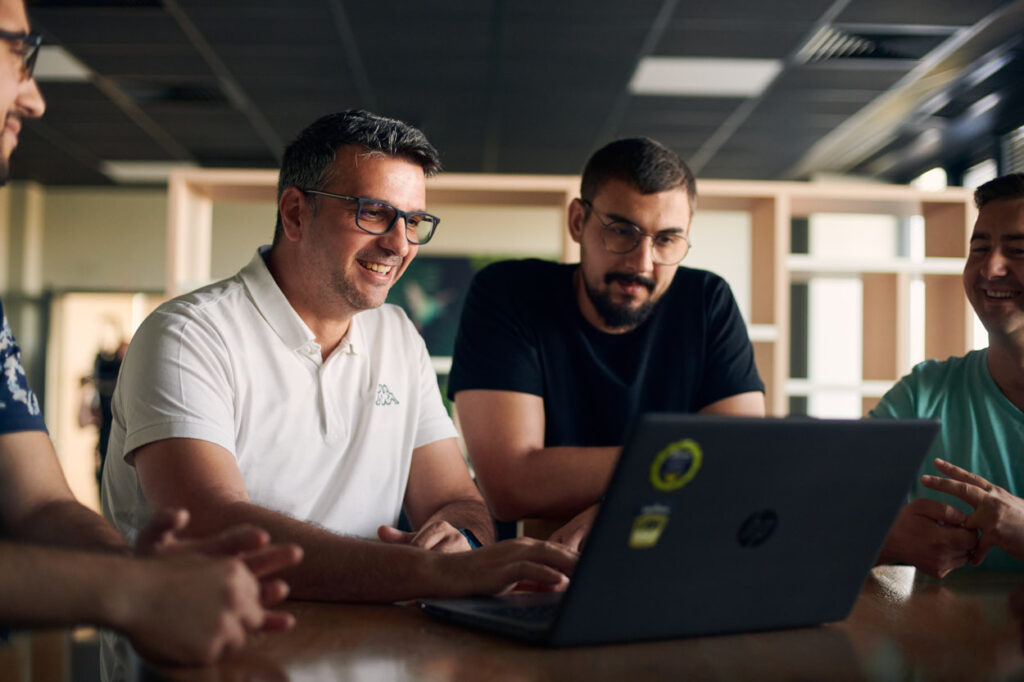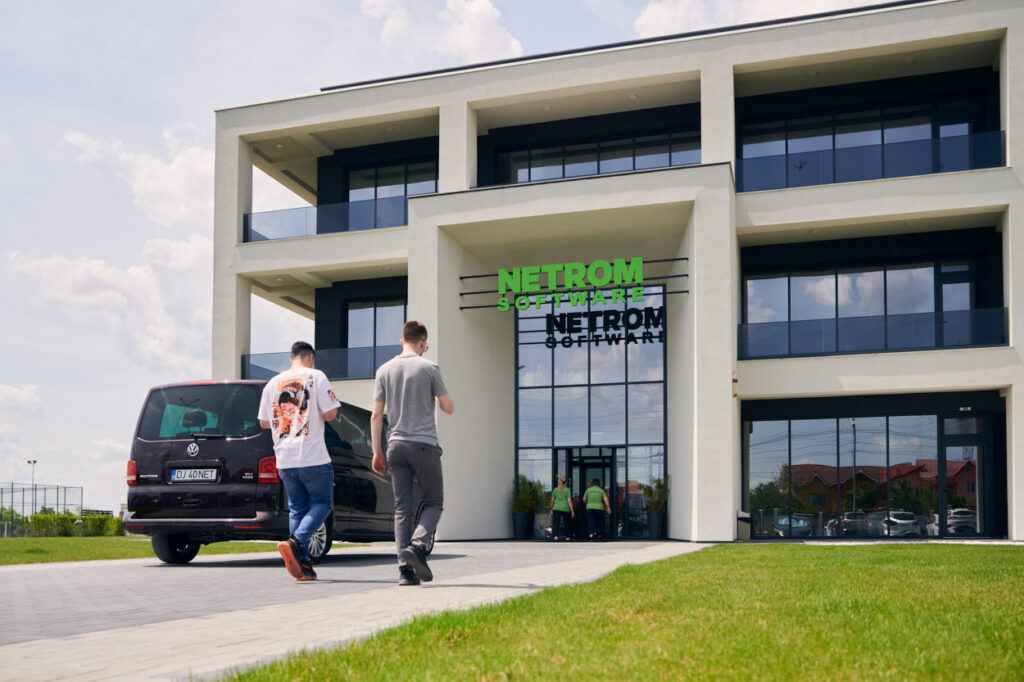
A successful development process starts long before our IT specialists write the first line of code. At NetRom, every new software project begins with a carefully designed onboarding process in IT outsourcing. This is not a formality, but a deliberate strategic step aimed at thoroughly analysing the client, their objectives, and the desired IT solution. Through this approach, we ensure a smooth development process and an outcome that aligns seamlessly with our client’s business goals.
Since our founding, we have believed in long-term partnerships that focus on delivering high-quality and successful IT solutions for our clients. These principles form the foundation of our approach as a nearshore partner: the better we understand the initial context, the more effectively we can develop a smart solution that meets expectations and delivers lasting business value.
From introduction to project analysis
After an initial meeting with one of our account managers, the client shares – under an NDA (Non-Disclosure Agreement) – a document outlining the objectives of the software product. Our Senior Engineers and Solution Architects – experts with extensive technical knowledge, years of hands-on experience, and deep domain expertise – conduct a thorough analysis of this case. They prepare a detailed questionnaire and schedule follow-up sessions with the client to explore the project in depth.
For every new engagement, we systematically analyse and document all relevant aspects, including any existing legacy environment and technical debt. We also assess the current and intended cloud infrastructure (AWS, Google Cloud, and Microsoft Azure). This allows us, from the very start, to act as an active nearshore partner in making strategic decisions and designing scalable solutions. The goal is always the same: to fully understand the logic and background of the project.
Functional and technical scope
During the preparation phase, we make a clear distinction between the functional and technical scope. The functional scope describes what the software must do and is derived from the client’s briefing. The technical scope defines how that functionality will be implemented using the appropriate technologies.
The technical team plays a crucial role in this process. Together with the client’s Product Owner (PO), our IT specialists refine the functional scope and translate it into an innovative technical solution. This clear alignment ensures that the team can start working in a focused and efficient manner from day one.

Tech stack and tooling
Once we have a complete understanding of the project, we define the tech stack – the specific set of technologies used to develop and run the software application. This includes programming languages, frameworks, databases, servers, and operating systems. In addition, we carefully select the tools used throughout the process, from development and testing to project management. This ensures an efficient workflow and optimal development speed.
Building the development team
Once the tech stack and tooling have been defined, we assemble a team with the right expertise for the project. The composition is always tailored to the specific project objectives. In addition to developers and QA specialists, a team may also include architects, technical writers, and proxy product owners.
When selecting IT professionals, we carefully assess whether each candidate adds real value to the team. Technical expertise, domain knowledge, and experience with the relevant tech stack are important factors, but personality and seniority carry equal weight.
Our goal is to create teams in which developers complement and strengthen one another, making the whole greater than the sum of its parts. With more than 500 highly skilled and motivated IT professionals, we ensure continuity in both quality and knowledge. Through the NetRom Academy, we continuously invest in IT talent development, ensuring our teams work with the latest technologies and methodologies.

Communication tools for seamless collaboration
In nearshoring – where our teams in Romania work closely with clients in the Netherlands – effective collaboration is essential. For this reason, we carefully align communication tools and project management software with each client.
At NetRom, we use platforms such as Jira, GitHub, and Confluence (Atlassian). These tools enable transparent information sharing, clear task allocation, and efficient collaboration between the NetRom team and the client. As a nearshore partner, we use these systems to ensure full visibility and control over progress and quality, regardless of physical distance.
Proof of Collaboration
Many development projects start with a Proof of Collaboration – a short sprint phase in which we complete a number of tasks together with the client. During this period, the client gets to know the team and experiences how the collaboration works in practice. New clients often find that the NetRom team operates with the same focus and commitment as their own internal staff.
Roles and responsibilities
When the Proof of Collaboration is successfully completed, the full software development phase begins. In many cases, the client provides the Product Owner (PO), as this person is most familiar with the internal organisation. NetRom assigns an operational manager who acts as the key link between the PO and the development team. This coordinator monitors progress and collaboration, identifying potential issues early to prevent escalation.
Kick-off at the NetRom Campus
We prefer to organise the formal start of the development process through a multi-day kick-off at the NetRom Campus in Romania. In this inspiring setting, representatives of the client meet the entire team. During these sessions, we align mutual expectations with one clear goal: building a long-term and productive collaboration.

Progress monitoring and regional meetings
Throughout the development process, we schedule regular meetings between the client and NetRom. Each month, regional meetings are held with the client’s management team. During these sessions, we review progress, team dynamics, and overall collaboration to ensure that the project is executed to the client’s full satisfaction.
Want to learn more about our approach?
In this article, we have outlined our thorough and structured approach to starting a new development project. Are you interested in how we can support your organisation in realising its next software project? Contact us for a non-committal conversation about how we can help take your development process to the next level.